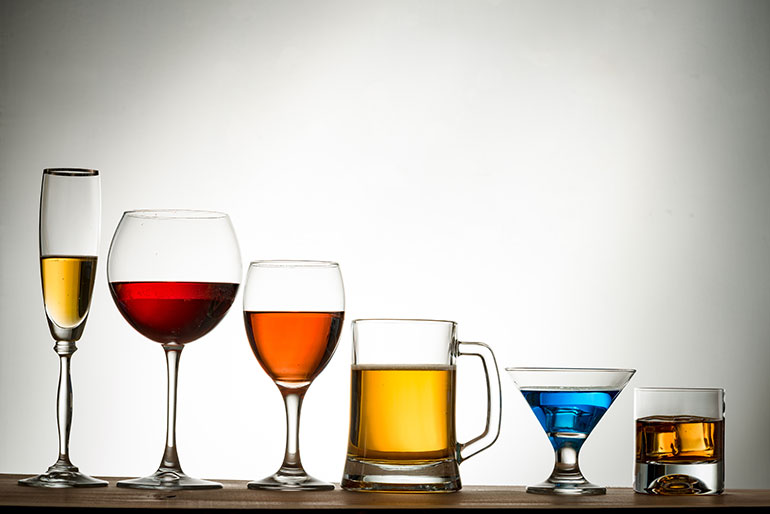
UBCO professor shares tips for sipping sensibly during a healthy holiday
For those concerned about sugar intake, particularly people on a diet or with diabetes, ringing in the holidays with the clinking of glasses may be a significant challenge. But for UBC Okanagan diet and exercise scientist Mary Jung, a few simple strategies can help maintain a healthy dose of holiday cheer while keeping sugar consumption to a minimum.
“We don’t often think about the amount of sugar in our drinks,” says Jung, an associate professor in UBC Okanagan’s School of Health and Exercise Sciences. “The truth is our beverages, whether they’re cocktail, mocktail or bubbly, contain a large amount of sugar. Combined with the alcohol, this could lead to a nasty morning-after for some and a crisis for those with health issues, such as diabetes.”
Jung, who researches how to self-regulate exercise, diet and physical behaviour, adds that not all is humbug. She suggests a few sipping guidelines for a merry and bright holiday morning.
Red versus white or bubbly
“The dryer the wine—which is a term for those that don’t taste sweet—the lower the sugar content,” says Jung. “This is true also for champagnes or sparkling wines.”
She adds that red wine may generally have less sugar than white and that fortified or ice wine will have the highest.
Watch the pours, adds Jung. “Wine glasses are purposefully large to encourage swirling, not necessarily to fill to the brim. The caloric estimates of one glass of wine are based on 5-ounce glass.”
Cocktails
“Hard liquor such as rum, tequila, gin and vodka have low or little sugar,” says Jung. “However, once you mix them with juice, soda and tonic water, this will increase.”
Jung suggests challenging taste buds with sugar-free soda, sugar-free cranberry juice or carbonated water with a squeeze of fresh lemon or lime.
Beer and coolers
“Unlike dry wine and spirits, beer contains calories from both the alcohol and the carbohydrates,” says Jung. “Consider instead a low-carb or light beer.”
She adds that coolers are not that cool when it comes to sugar content.
“Many coolers—beverages made mainly with vodka or rum—deliver at least 250 calories per 355 ml serving. This is more than you would consume in two bottles of light beer.”
She adds that some of these have as much as 310 calories and eight teaspoons of sugar per drink.
Mocktails or punches
“Non-alcoholic drinks like mocktails and punches are a fun alternative,” she says. “However, they may be high in sugar with the addition of juice and soda.”
To lighten these, she suggests being creative with fresh herbs like mint or basil and using carbonated water instead of soda.
How much sugar?
“As a general rule, the daily recommended sugar intake should not be more than 25 grams for women and 36 grams for men,” says Jung. “This adds up quickly. Be informed about your decisions and read the labels.”
“Every 5-ounce glass of wine, 1.5 ounces of hard liquor or a 12-ounce bottle of light beer has roughly 100 calories. Regular beer delivers 150 calories per 12-ounce serving,” she says.
Jung recommends keeping track of consumption.
“Monitor, monitor and monitor!” she says. “This is especially important when pouring wine or liquor. Track by the ounce, not by the glass!”
She suggests alternating alcoholic drinks with water or a non-sugar beverage.
Planning ahead
“Even more critical than drink choices or modifications are self-regulatory strategies,” says Jung. “It can be helpful to think about your personal health goals and how much you value them.”
She recommends deciding in advance what success looks like. For example, how many drinks will you have? Also, determine how much sugar will come from the accompanying food versus that from the beverages.
If you’re stumped, Jung suggests reading the guide from Diabetes Canada.